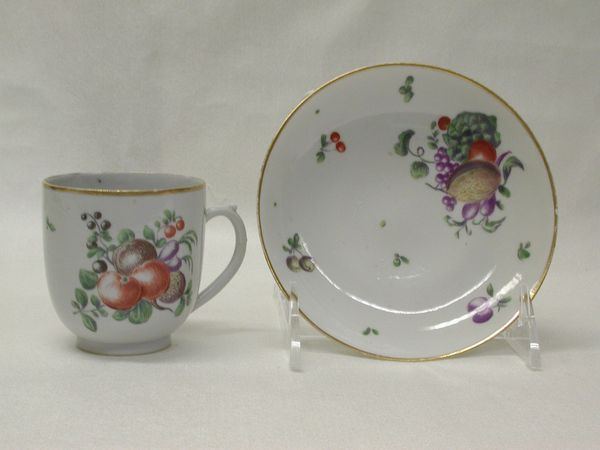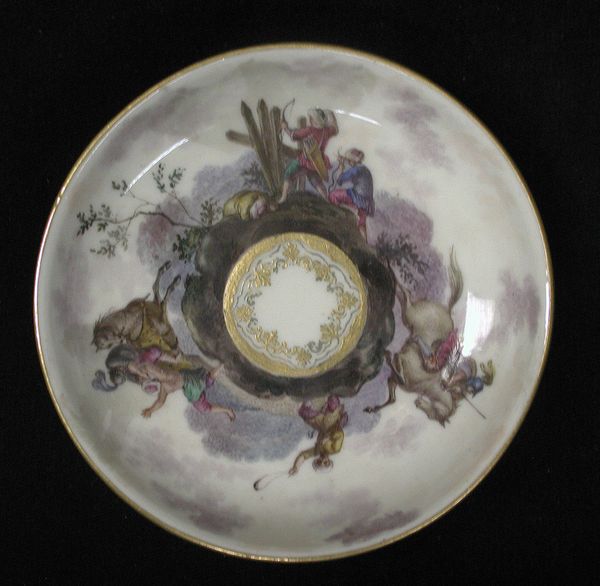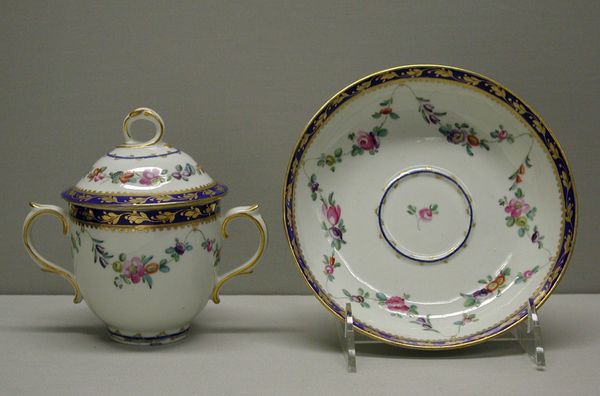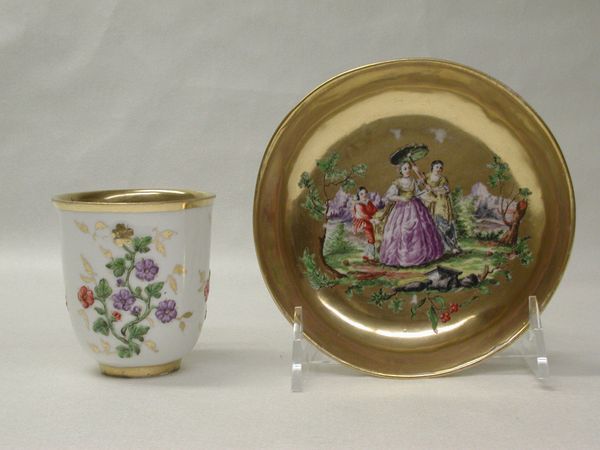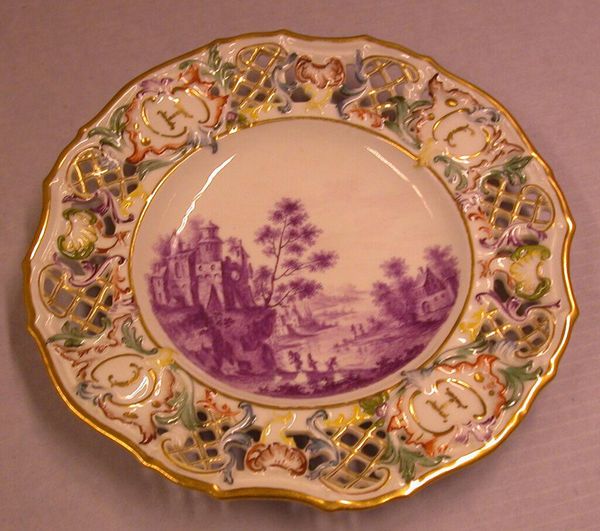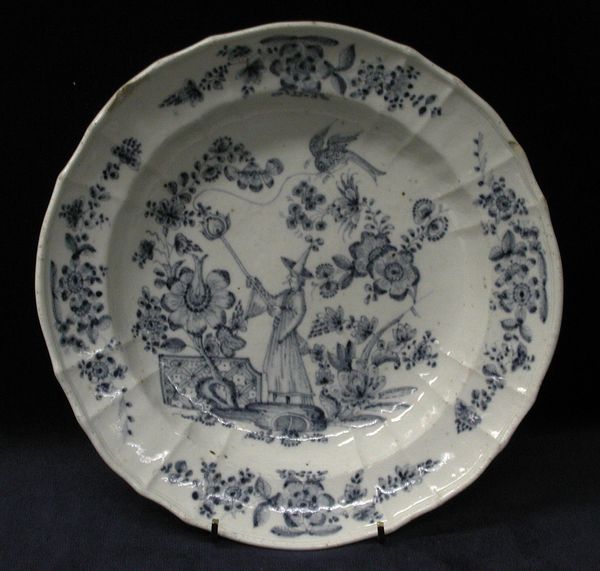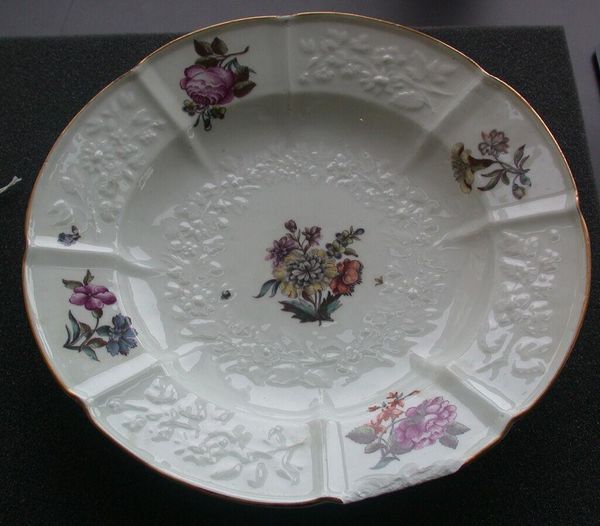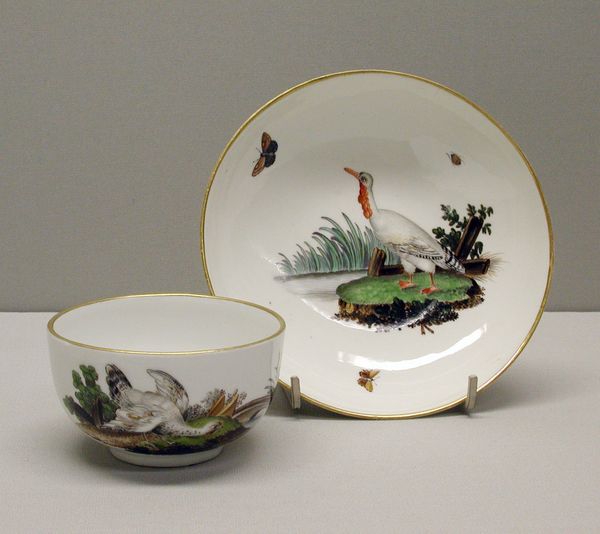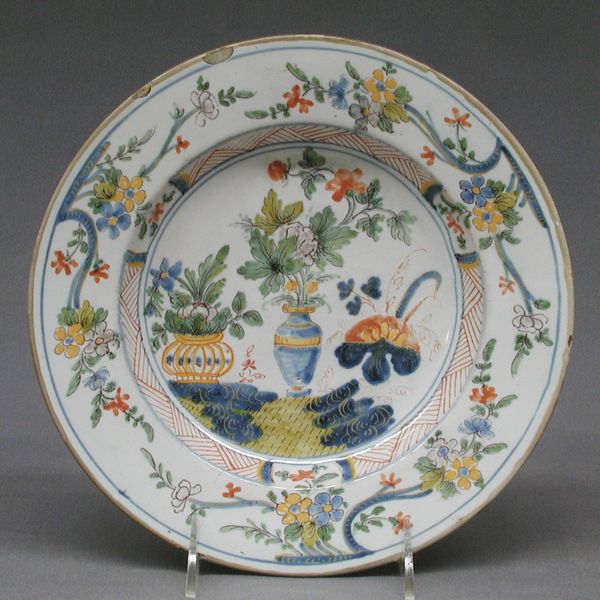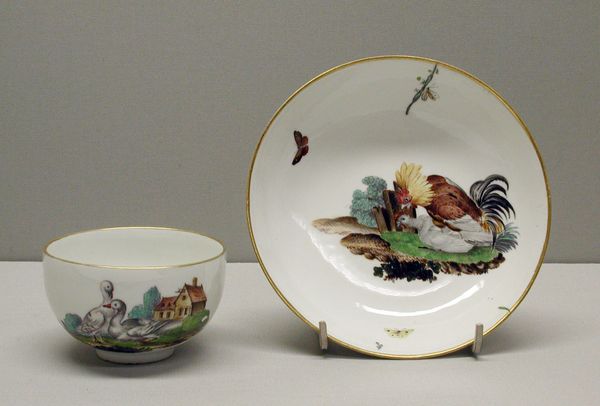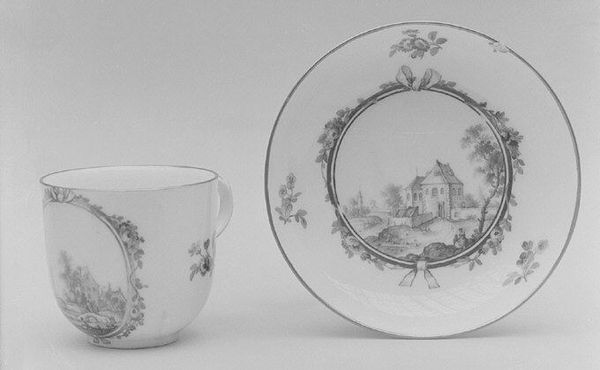
Dimensions: Height: 2 3/8 in. (6 cm)
Copyright: Public Domain
This delicate porcelain cup, made in Germany by the Gotha manufactory, speaks to the social rituals of 18th-century Europe. Porcelain, often called "white gold," was a prized material, and its use in tableware signaled wealth and refined taste. The cup and saucer are decorated with cherubic figures, rendered in a delicate pink. These images evoke a sense of playful innocence, a popular motif in Rococo art, which flourished in Europe during this period. Rococo, with its lighthearted and ornamental style, was closely associated with the aristocracy. The cup could have been used for enjoying beverages such as tea, coffee, or chocolate, which were increasingly popular among the upper classes. Historians consult design pattern books, trade records, and social etiquette guides to fully understand objects like this. These sources reveal how artistic styles were connected to social status, political power, and economic exchange. By studying this cup, we gain insights into the material culture and social practices of a bygone era.
Comments
No comments
Be the first to comment and join the conversation on the ultimate creative platform.
